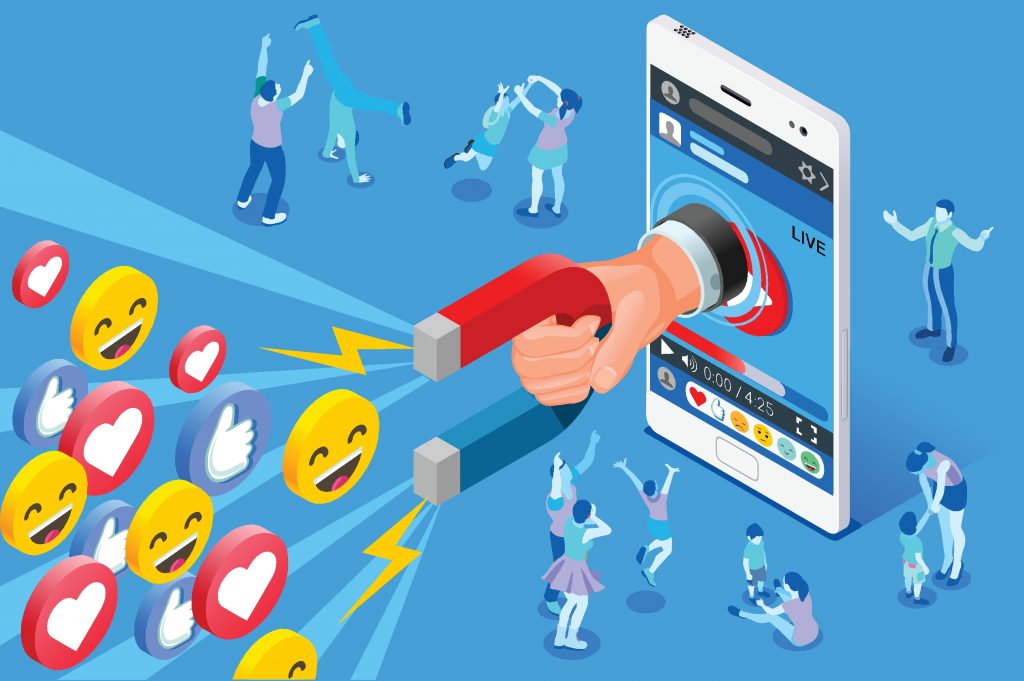Micro-influencers are people with a presence in social media larger than an average person but smaller than a celebrity. Typically, this is a person with a following of 1,000 – 100,000 people.
A micro-influencer uses this following to endorse or market products that align with their expertise or interests. For example, a travel writer promoting new hiking boots or a food blogger marketing a new kitchen appliance.
Brands seek the services of micro-influencers, who have earned the trust of their followers to offer a genuine validation of their products or services. Micro-influencers charge a lower price for their services than celebrity influencers.
What is the Difference between Influencers and Micro-Influencers?
An influencer is someone with a social media following of thousands, if not millions of people. Brands use them to promote their products to their vast audience. Brands pay influencers to sponsor their events or post content containing their products to capture the immense reach of the influencer and thus promoting the sale of their products or services.
As stated above, micro-influencers have a smaller follower base. However, their engagement rate with these followers peaks at about 1,000 followers. This is incredibly valuable if you want to increase your brand awareness. A micro-influencer has to create a lot of content that entices their audience and is well-grounded in their expertise area.
An example of a company using micro-influencer marketing is San Saru, a jewellery company based in Spain but sells around the world online. The company has embarked on micro-influencer marketing nationally and has obtained good results. San Saru is considering the same marketing strategy internationally by engaging international micro-influencers. This will help them acquire clients in other countries to reach a new audience transparently and closely.
Advantages of Micro-Influencer Marketing
Among the significant reasons for the success of influencer marketing on Instagram is because it gets rid of the barriers presented by conventional advertisements. Influencer marketing allows brands, especially small and medium companies, to interact with their audiences less directly, noninvasively, and more authentically. When a brand partners with a relevant influencer, they tell their story more genuinely. Consequently, the brand gains trust better than a direct sales message.
The following are other Advantages of Micro-Influencer Marketing
1. Have Smaller Audiences that are More Targeted
It is easier to find micro-influencers who fit your brand than a similar influencer. Micro-influencers have followers who are genuinely interested in what they talk about on their social media platforms.
2. Authentic and Credible
A micro influencer’s audience follows them for a significant period and similarly invests their life in the same way you would value the opinion of a friend about a particular product or service. Micro-influencers do not endorse products or services for the sake of it; they first have to believe that the product or service will be beneficial to their followers.
3. Cost-Effective
Although an influencer might have a more extensive following, micro-influencers enjoy higher engagement with their followers. This can propel a single post to obtain greater visibility and become more trusted. Trusted content has a higher value and gains more audience, but it costs much less to work with a micro-influencer due to its lower reach.
4. Accessible
Finding an influencer to post content relating to your product can be daunting. You can easily find a niche-specific micro-influencer just by using Google. Typically, micro-influencers know what they want to finance a project successfully and won’t mess with you as they have a reputation to protect.
Final Thoughts
While it is essential to find out the social media channels used by other marketers for their micro-influencer promotions, your priorities should be based on your objectives. Consider all aspects of your campaign and how they fit a particular platform when choosing a social media platform for your campaign.
The most popular and effective social media platforms for micro-influencer marketing are Instagram, YouTube, Facebook, Blogs, and Twitter. Each channel provides a unique audience, different types of influencers, and distinctive benefits. For example, Instagram attracts Millennials, Gen X and Gen Z groups.
An Instagram post consists of video(s) or photo(s) with a caption describing the product or service appearing in the followers’ feeds. These posts enable micro-influencers to present your brand visually and tell a story or provide a discount code.
Therefore, be very particular when choosing a micro influencer to promote your product. Ensure that their followers regularly engage them and that they have a genuine interest and passion in what they post or talk about.
